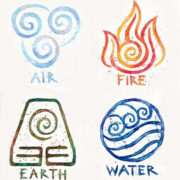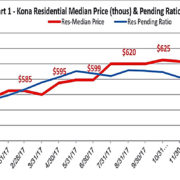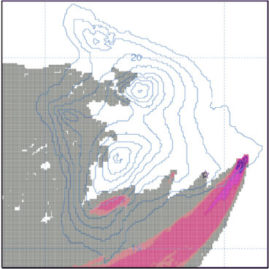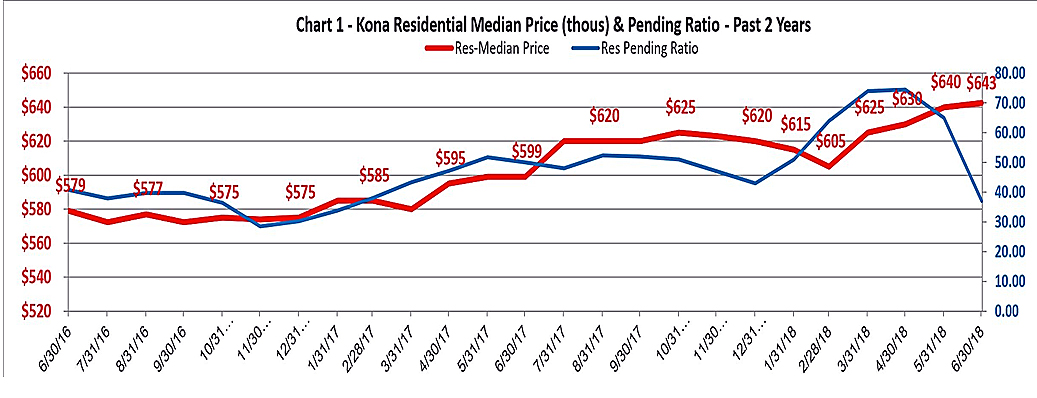Hawai’i – Earth, Wind, Fire, and Water
Volcano Update: Monday, Aug. 6th, 2018 —
Since this July 29th issue of Hawai’i Today was published, and beginning this past Saturday (Aug. 4th), field observations and drone overflights indicated “reduced output” from Fissure 8. By late Saturday afternoon, the lava river, which had once been a vigorous liquid flow moving over 30 mph, had become a very slow moving flow chunky hardened cooler lava.
The latest report, issued by Hawaii County Civil Defense (Sunday evening) stated the there was no lava moving in the lava river channel. At the heart of the eruption, the cone at Fissure 8, there is still some lava spattering, but the lava fountains of 200 feet high and more have stopped.
At the summit of Kilauea, the rhythm of the last couple months of 5.2 magnitude earthquakes every 36 hours has also stopped. There has not been a magnitude 5 or greater earthquake in over 3 and a half days, and the magnitude 2 earthquakes, which were numbering in the hundreds per hour, now happen at a rate of a few per hour.
What’s next is anyone’s guess.
BeyondKona’s July 29th issue of Hawai’i Today:
KILAUEA – the volcano that keeps on giving
Reuters reported last week: “Hawaii eruption could last years, destroy new areas”. The Reuters report went on to state: “The current eruption could become the longest in the volcano’s recorded history”. It’s noteworthy, these dire predictions are just that, predictions, and volcanic science is imprecise, even in the tech-weighted 21st century.
Here’s what we know. A higher volume of molten rock is now flowing underground from Kilauea’s summit lava reservoir than in previous eruptions, with supply to a single giant crack — fissure 8 — and is showing no signs of waning, according to the study published last week. The lava is now bursting from the same area (about 25 miles down Kilauea’s eastern side) as it did in major eruptions of 1840, 1955 and 1960. The longest of those eruptions was in 1955. It lasted 88 days, separated by pauses in activity.
If the ongoing eruption maintains its current high rate, Kilauea-based geologists believe it may take months to a year or two to wind down.
Geologists also believe previous eruptions may have stopped as underground lava pressure dropped due to multiple fissures opening up in this Lower East Rift Zone. The current eruption has coalesced around a single fissure (8), allowing lava pressure to remain high.
Hawai’i (Big) Island consists of an area representing nearly 63% of the entire state’s land mass, and is growing daily thanks to the current eruption activity. With 4,000 plus square miles of land and multiple micro climates, Hawai’i Island is nature at its fullest, and the current eruption is producing consequences far beyond the island’s districts of Ka’u and Puna. For example, here are some of the early eruption indicators and impacts on Hawai’i Island:
1- The number of voggy and overcast days now outnumbers clear air, sunny days in West Hawai’i
2- Respiratory health problems related to vog-smog (SO2) exposure have spiked with local residents
3- Nurseries, landscapers, and agricultural operations have reported increased yellowing and other signs of plant stress. Some good news as well, many Kona coffee growers are pleased with the unusual number and duration of overcast days (less the SO2), which is apparently good for growing coffee
4- The same (vog-related) overcast conditions pleasing some Kona coffee growers, has presented other problems for some of Hawai’i Island’s solar energy community who are experiencing a decrease in historic energy production
Overall, our Hawai’i Island community appears to be adapting to the current economic, environmental, and community changes, while gearing up for a possible long term increase in Kilauea’s volcanic activity. If the aloha spirit and community, mean anything, it is that they are more than just words when practiced by our island residents …and now is the time.
HAWAI’I ELECTIONS: GOVERNOR and LT GOVERNOR RACES
It’s election time again in Hawai’i, and primary election cycles in Hawai’i generally decide the outcome of many races, including our next governor.
Hawai’i is currently at a crossroad, and BeyondKona has researched the backgrounds, qualifications, achievements, and energy policy agenda of the candidates for Governor and Lt. Governor, and who may well decide the state’s energy future: one towards sustainability or greater dependency on imported fossil fuels.
So why is energy so important? Next to life’s fundamental need for food, water, housing; energy is the foundation and building block of our modern world. Living in Hawai’i is expensive, as is the case for imported energy and its supply chain dependency from one of the most remote and populated locations on Earth.
Hawaii’s cost of living is the highest of any of the 50 states. Hawaii, which along with Alaska belongs to the “Pacific Noncontiguous” region of the US, has by far the highest monthly utility bills. For Hawai’i Island residents and businesses, energy represents half or more of the cost of water for DWS customers, and our island electric utility HELCO rates are the highest in the nation, and among the costliest of HECO’s four island utility service range.
The choice of governor in this current election year will likely determine the direction and outcome of Hawaii’s 2045 100% renewable energy objective, and the cost of energy in the future. ”Although Hawaii’s energy policy is spelled out generally by statute, Hawaii’s governor plays a significant role in implementing the policy”, stated Rep. Chris Lee, chairman of the House Energy and Environmental Protection Committee.
For many voters, Governor Ige gets a gold star for both clean energy leadership, and another for protecting Hawaii’s unique and precious multi-island environment.
- Ige’s leadership style is a refreshing contrast to many of today’s political leaders whose self-serving agenda is more media engagement than substance or achievement. Ige has demonstrated quietly and thoughtfully honest leadership as Hawaii’s chief executive — addressing Hawaii’s growing homeless problems, supporting Hawai’i Island in its most recent major eruption and the corresponding disruption of communities and businesses.
- The Governor’s highest visibility action to date was opposing the highly unpopular NextEra takeover of HECO. For any other governor it would have been an easy sell-out to NextEra and political gain that would have provided NextEra the support it badly needed, but Ige instead repeatedly placed the state’s interest ahead of any potential personal and political gain by standing up against the NextEra’s fossil-fueled political juggernaut by representing Hawaii’s interests first.
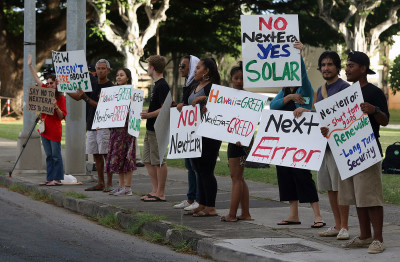
- This election year’s Sierra Club endorsement of Ige stated…” Hawaii’s common-sense commitment to clean energy owes a lot to Gov. David Ige, who championed this vision at the Legislature and made it a core part of his leadership agenda”. Ige’s leadership has produced more than twice as many people now working in Hawaii’s clean energy sector — these are well paying local jobs.
However, the elephant in the room that many politicians fail to acknowledge is the growing societal, environmental and economic costs of burning fossil fuels linked to global warming. An absence of leadership on this macro issue by Colleen Hanabusa could not be more obvious.
Hawai’i is now squarely in the cross hairs of climate change. The impact and costs of climate change on island states like Hawai’i, continues to accelerate, with rising sea levels, super storms, and changing wind and weather patterns. Hawaii’s future is increasingly dependent on the energy choices we make today, and moving Hawai’i forward to self-sufficiency in energy and food are key to the state’s future and viability; no governor understands this better and has demonstrated leadership towards tackling climate change than Gov. David Ige.
Rep. Colleen Hanabusa… Hanabusa’s links to the fossil fuel industry go back to her family’s gas station. She has previously served as a director of Hawaii Gas, and is a strong advocate of LNG (natural gas) for Hawaii’s future.
- Hanabusa pushed hard for the NextEra takeover of HECO and its island operating utilities, and supported NextEra plans to slow Hawaii’s advancement of solar, wind, and other local clean energy options, substituting the importation of natural gas as a so-called “bridge” and dirty fuel replacement for Hawaii’s current dependency on other fossil fuels.
- Also, in this current election cycle, a dark money PAC (fossil fuel funded) launched several TV attack ads against Ige that some considered crossed a line when it comes to Hawaii’s historic rules of political engagement.
⊗ – BeyondKona recommends the re-election of Governor David Ige
Hawaii Island continues to struggle in its development of adequate health resources and services for our island population – no one understands this issue better and is better qualified to address this problem than Dr. Josh Green.
Green is a practicing local Hawai’i Island doctor who has spent much of his life caring for Hawaii’s families. As a State Senator, Green currently serves as the chair of the Committee on Human Services, and has been a leader on advancing Hawaii’s health care opportunities. He is also a member of the Committee on Hawaiian Affairs and represents Hawai‘i’s 3rd Senatorial District. Green has served in the Hawai‘i State Senate since 2008, and understands the issues facing Hawai’i today, especially the importance of the state’s transition to a clean energy economy.
⊗ – BeyondKona recommends the election of Dr. Josh Green to the position of Lt. Governor
BeyondKona has researched the candidates, their qualifications, voting records, legislative achievements in full consideration of its candidate recommendations.
We kindly urge our kama’aina friends to vote by mail or at the ballot box in this year’s important primary election, August 11, 2018. Mahalo a nui loa.
IT’S HOT AND GETTING HOTTER
This 2018 summer marks a global spike in the continuing trend of global temperature rise. Weather stations around the world are logging record-high temperatures on the edge of the Sahara and above the Arctic Circle.
From the Arctic to Antarctic and places in between we are witnessing and experiencing the heat this summer, with massive fires in the mainland’s western states, super storms in the east, and rising global heat-related deaths that defy the current US Administration’s policy on climate and energy – one that appears deaf, dumb, and blind to the scientific facts, costs, and societal consequences of global warming.
The Arctic Circle this month is experiencing an unprecedented heat wave that has sent temperatures in the far north of Sweden as high as 86 F, and in parts of northern Siberia it reached 90 F degrees, 40 F degrees above normal. After years of increasingly hot, dry summers, the great forests in the far north, and around the globe are starting to burn releasing large quantities of carbon dioxide into the atmosphere, and melting permafrost that is releasing huge quantities of methane – what scientists call a feed-back loop that is further accelerating global warming impacts. Japan was walloped by record triple-digit temperatures, killing at least 86 people in what its meteorological agency bluntly called a “disaster.”
So far, Hawai’i has escaped some of these climate change impacts, but that is now changing. Sea-level rise, coral beaching and die-off, and changing weather and trade wind patterns that are now being experienced throughout the Hawaiian island chain. It seems, no matter how remote Hawai’i may seem from the rest of the world, global warming is truly global. For an in depth perspective on current and frightening climate change developments, visit the BeyondKona Climate section: https://www.beyondkona.com/climate/

